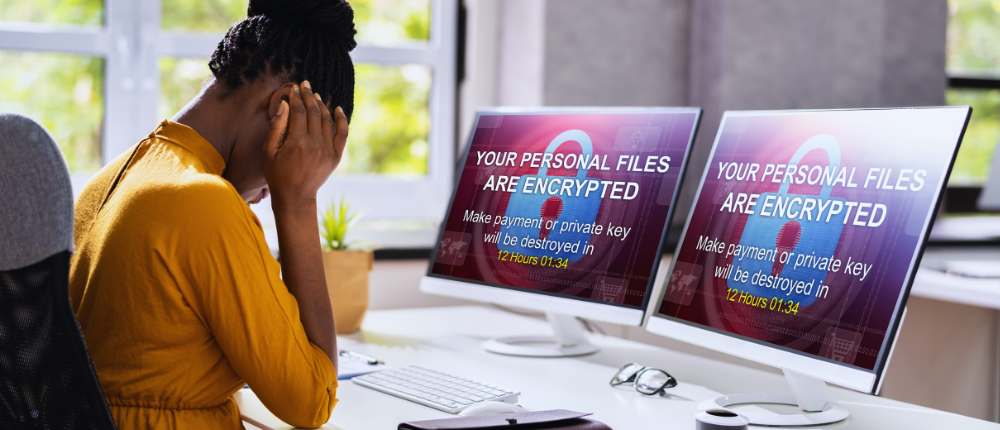6 Signs That Malware is Already in Your Company’s Device
Like any other organisation, small businesses rely on digital tools to run their operations. While digital tools are convenient and efficient, they also make small businesses targets for cybercriminals. Since these companies usually lack strong security measures, they become vulnerable to cybersecurity threats. Bad actors can usually steal sensitive company’s data and disrupt their operations through malware without too much effort.
The biggest issue is that malware can remain hidden on your devices for a long time, silently collecting data or weakening your network’s defences. For a business owner, recognising the early signs of a malware infection can help reduce data breaches and save money.
Unusual System Behaviour
One of the first signs of malware is strange or unusual behaviour in your company’s devices. It can include:
Slow Performance
Devices slow down with time, but that’s not always the reason. If your computer or other devices suddenly become sluggish or take too long to load applications or files, it could point to malware using up system resources.
Frequent Crashes
Malware often causes systems to freeze or crash unexpectedly. If you notice applications closing or the screen going blank, that’s definitely a red flag.
Unwanted Pop-ups
Malware can flood your devices with random ads or pop-ups. If they happen quite often, then it’s a huge warning sign. You might think this is harmless, but these interruptions may indicate that adware has infiltrated your device.
Programs Behaving Erratically
If apps start or close on their own or sit unresponsive for extended periods, it could be a sign that malicious software is messing with their everyday operations.
Unexplained Network Activity
Malware often communicates with external servers to transmit stolen data or receive further instructions. One key indicator is unusual network activity:
Spikes in data usage
A sudden and unexplained large increase in data usage, could mean that malware is sending a large amount of data out of your network to an external server.
Unfamiliar connections
Malware might attempt to establish unauthorised connections with external servers. Monitor your network’s incoming and outgoing traffic for any suspicious activities.
Unauthorised Access
If employees notice unauthorised access to files, accounts, or sensitive areas of the system, this is a critical sign of a breach. Malware can:
Modify Files
Some types of malware change or delete files without your knowledge. This action can lead to unexpected data loss or anomalies in your documents.
Create New Accounts
A hacker may try to get access to your system by creating new admin accounts or user profiles without your knowledge or consent.
Cause Unrecognised Login Attempts
Look into any suspicious login attempts made outside business hours or from unknown foreign IP addresses. Any of these things could mean that malware has gained unauthorised access.
Data Anomalies
If you notice unusual data behaviour, it could be a sign that malware is already working behind the scenes:
Corrupted Files
Files that won’t open, appear corrupted, or display unexpected errors could indicate malware is affecting your system.
Unexplained Modifications
Malware might alter data, change access permissions, or lock users out of specific files. These changes can potentially cause data breaches and disrupt regular business operations.
Excessive Use of System Resources
Another common symptom of malware infections to watch out for is the excessive use of system resources. Check for:
High CPU or Memory Usage
It’s possible that malware is hiding on your device if your task manager or system monitor shows that apps you don’t know are using a lot of resources.
Excessive Battery Drain
Malware can cause your mobile battery to drain faster by constantly running background processes, even when you don’t use your phone.
Increased Internet Bandwidth Usage
Malware that communicates with remote servers can hog a lot of your internet bandwidth, making it difficult for your network to handle regular business operations.
Security Software Disabled
Among the first things that malware hits is your security software. This includes your antivirus programs, firewalls, and other protective tools. If you see that your security software doesn’t work, has been deleted, or cannot be updated, it’s a sign that malware is trying to remain undetected.
Security Measures to Block Malware
Detecting malware early on is a plus for your business, but preventing it from entering your systems is even more important. There are several security measures you can try to detect and block malware for good:
Use a VPN with Malware Blocking Features
A virtual private network (VPN) is your greatest defence against cybersecurity threats. Apart from encrypting your internet connection, a VPN can include built-in malware-blocking capabilities. It can stop your devices from accessing malicious websites or downloading files that could harm them. VPNs ensure cybercriminals can’t easily monitor or intercept your company’s data.
You should advise remote workers or teams that work outside the office to use a VPN with a malware blocker. Your employees need to have secure connections even when connecting on public Wi-Fi or unsecured networks.
If you worry about the cost of a premium VPN subscription, you’d better think twice – VPN price is low compared to the sum you will spend to recover from a data breach.
Regular Software Updates
Outdated software is one of the most common ways malware sneaks its way inside. Always keep your operating systems, applications, and security software up to date with the latest patches. One of the reasons for so many software updates is the fact that they often contain security fixes for newly discovered vulnerabilities. This makes it more difficult for malware to exploit your systems.
Also, think about using patch management software that will automatically find and apply updates for all devices in your company. It ensures that your systems no longer become susceptible to newly discovered threats.
Regular Security Audits
Security audits consist of systematically checking out your company’s security measures to see vulnerabilities that can be exploited by malware or other cyber threats. These audits will ensure that your security policies, tools, and practices stay up-to-date and actually work.
Install Anti-Malware Software
All your company devices should have reliable anti-malware software installed. This software will scan your system regularly, detect known threats, and block malware before it can take hold. Remember to update it to detect the latest threats. Also, review its status regularly just to be sure it’s doing its job.
Regular Employee Training
Employee training is often overlooked but necessary all the same. Employees are generally the weakest link in your company’s defence against malware. To prevent these issues, ensure they receive consistent and frequent training on cyber awareness, phishing detection, and the safest ways to browse online. If they notice any suspicious behaviour, they should report it to IT immediately. The simple steps, like teaching employees not to click on suspicious links and downloading unverified files, go a long way in stopping malware attacks.
Avoid Using USBs and Memory Cards
While running a business, it can be tempting to use USBs and memory cards for file transfers between organisations and people. However, it only takes one person plugging in a malware-infected USB drive to ruin your entire progress. Memory cards are also risky since they can have the same problem.
Enable Two Factor Authentication (2FA)
Enabling two-factor authentication on all company accounts and devices is another crucial security measure. 2FA adds an extra layer of security, requiring an employee to type in not only a password but also some type of secondary verification. For example, it can be a code sent to their phone. This makes it much harder for cybercriminals to penetrate your systems, even when they breach login credentials.
Use Strong Passwords
A simple but powerful defence against malware attacks is a strong password policy. Weak or reused passwords are an easy target for cybercriminals because they’re easy to breach. Cybercriminals can gain unauthorised access to your network and install malware into it.
Encourage your employees to create strong and unique passwords with combinations of letters, numbers, and special characters. Also, advise them to change their passwords every six months or so. A good idea is to use password managers to store all of your company’s passwords and even generate new complex ones.
Regular Backups
Having your company’s data backed up is one of the most effective ways to reduce any damage done by malware, especially ransomware attacks. Backups help when critical files get corrupted, deleted, or encrypted by malware without paying a ransom or losing valuable information. First, automate the backup process so that you can regularly save important data. Next, use an external hard drive or an encrypted cloud storage to store backups in a safe, separate place. Lastly, test your backups as often as you can to ensure they can be restored successfully.
Enable Firewalls to Protect Your Network
A firewall filters incoming traffic and prevents unauthorised users from accessing your internal network. Set up firewalls to protect all of your computers, servers, and routers in your business. You can consider a network firewall that filters incoming and outgoing traffic to protect your entire business network by following predefined security rules. Or, you can opt for a host-based firewall that’s installed on individual devices and acts as a barrier between the device and the rest of the network.
A Few Final Words
Malware is a growing threat for small businesses in Australia, so detecting it early on can save your organisation a lot of damage and money. Make it a habit to follow and implement strong security measures, and you won’t have to worry about hackers taking over. Also, ensure you stay updated on the latest cybersecurity threats that small business owners face. The more you understand them, the better prepared you’ll be to take the necessary steps to eliminate them.
***
RC












